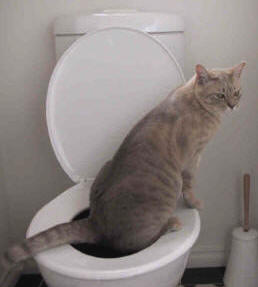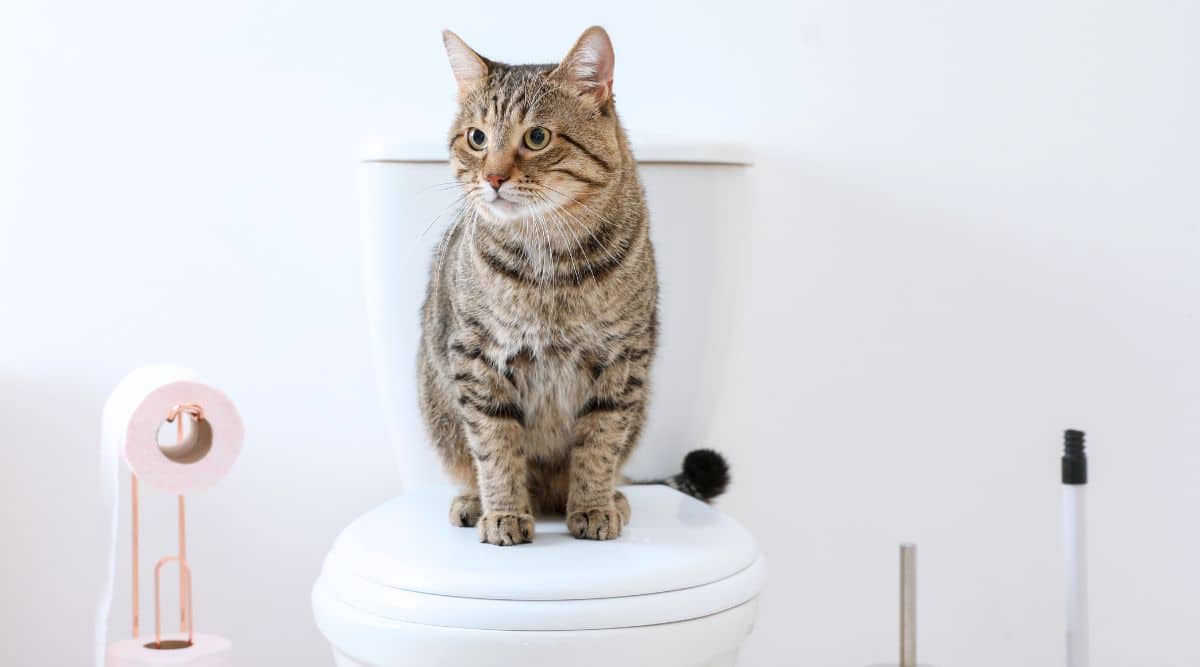The Consequences of Flushing Cat Poop Down Your Toilet - Protect Your Plumbing
The Consequences of Flushing Cat Poop Down Your Toilet - Protect Your Plumbing
Blog Article
How do you actually feel with regards to Don’t flush cat feces down the toilet?

Introduction
As pet cat owners, it's essential to bear in mind just how we take care of our feline close friends' waste. While it might appear practical to flush feline poop down the commode, this practice can have detrimental repercussions for both the setting and human health and wellness.
Environmental Impact
Purging cat poop introduces hazardous microorganisms and parasites into the water system, presenting a significant risk to aquatic environments. These impurities can adversely influence aquatic life and compromise water top quality.
Wellness Risks
Along with environmental issues, purging pet cat waste can also position wellness risks to people. Feline feces may consist of Toxoplasma gondii, a bloodsucker that can trigger toxoplasmosis-- a possibly severe illness, especially for expectant women and people with weakened body immune systems.
Alternatives to Flushing
Thankfully, there are much safer and extra liable methods to dispose of pet cat poop. Take into consideration the adhering to alternatives:
1. Scoop and Dispose in Trash
The most usual approach of disposing of pet cat poop is to scoop it into an eco-friendly bag and throw it in the trash. Make certain to utilize a dedicated trash scoop and take care of the waste quickly.
2. Use Biodegradable Litter
Select biodegradable pet cat litter made from products such as corn or wheat. These trashes are eco-friendly and can be securely disposed of in the garbage.
3. Hide in the Yard
If you have a lawn, consider hiding feline waste in a designated location far from vegetable yards and water resources. Be sure to dig deep adequate to prevent contamination of groundwater.
4. Install a Pet Waste Disposal System
Purchase an animal garbage disposal system particularly created for pet cat waste. These systems make use of enzymes to break down the waste, decreasing odor and ecological impact.
Conclusion
Responsible pet ownership prolongs past giving food and shelter-- it likewise entails appropriate waste management. By refraining from purging pet cat poop down the commode and choosing alternate disposal approaches, we can minimize our ecological impact and secure human health and wellness.
Why Can’t I Flush Cat Poop?
It Spreads a Parasite
Cats are frequently infected with a parasite called toxoplasma gondii. The parasite causes an infection called toxoplasmosis. It is usually harmless to cats. The parasite only uses cat poop as a host for its eggs. Otherwise, the cat’s immune system usually keeps the infection at low enough levels to maintain its own health. But it does not stop the develop of eggs. These eggs are tiny and surprisingly tough. They may survive for a year before they begin to grow. But that’s the problem.
Our wastewater system is not designed to deal with toxoplasmosis eggs. Instead, most eggs will flush from your toilet into sewers and wastewater management plants. After the sewage is treated for many other harmful things in it, it is typically released into local rivers, lakes, or oceans. Here, the toxoplasmosis eggs can find new hosts, including starfish, crabs, otters, and many other wildlife. For many, this is a significant risk to their health. Toxoplasmosis can also end up infecting water sources that are important for agriculture, which means our deer, pigs, and sheep can get infected too.
Is There Risk to Humans?
There can be a risk to human life from flushing cat poop down the toilet. If you do so, the parasites from your cat’s poop can end up in shellfish, game animals, or livestock. If this meat is then served raw or undercooked, the people who eat it can get sick.
In fact, according to the CDC, 40 million people in the United States are infected with toxoplasma gondii. They get it from exposure to infected seafood, or from some kind of cat poop contamination, like drinking from a stream that is contaminated or touching anything that has come into contact with cat poop. That includes just cleaning a cat litter box.
Most people who get infected with these parasites will not develop any symptoms. However, for pregnant women or for those with compromised immune systems, the parasite can cause severe health problems.
How to Handle Cat Poop
The best way to handle cat poop is actually to clean the box more often. The eggs that the parasite sheds will not become active until one to five days after the cat poops. That means that if you clean daily, you’re much less likely to come into direct contact with infectious eggs.
That said, always dispose of cat poop in the garbage and not down the toilet. Wash your hands before and after you clean the litter box, and bring the bag of poop right outside to your garbage bins.
https://trenchlesssolutionsusa.com/why-cant-i-flush-cat-poop/

Do you really like reading about How to Dispose of Cat Poop and Litter Without Plastic Bags? Put a comment below. We will be interested to listen to your ideas about this article. We are looking forward that you come back again in the future. Do you know another person who is involved in Can You Flush Cat Poop Down The Toilet?? Please feel free to promote it. Thanks a bunch for your time. Come back soon.
Free Estimates Report this page